For the less motivated, the search for an easy way to get fit, lose bodyfat and even gain muscle never seems to end. How else to explain the apparent success of late-night infomercials that promise to deliver all the goals of exercise with minimal effort? Those who refuse to exert the necessary effort to achieve physical goals, whether building muscle, losing fat or both, are easy prey to inflated claims. Never mind that the muscular and fit models shown using worthless contraptions got that way through regular and frequent gym sessions and a clean diet. That part of the equation is never revealed.
The quest for a magic machine that will make exercise as easy as possible isn’t new. Back in the 1940s, a machine was introduced that purportedly enabled you to spot reduce stubborn fat deposits on the waist and lower-back areas. You’d stand on a platform, and then slip into a belt that would encircle your waist. Turning on the machine caused the belt to vibrate intensely. The idea was to shake the recalcitrant superfluous fat off your body. All you had to do was stand still and let the machine do the work.
Passive exercise, as it was called, was quickly condemned by scientists and exercise experts. Authorities noted that the calorie burn was negligible and no actual muscle was involved. Without a suitable level of muscular involvement, fitness simply could not be attained. Eventually, the vibrating-belt machines were relegated to the Dumpster, no longer seen but fondly remembered as symbolic of an era when you could get a tank of gas for less than a buck.
Even so, vibration as a means of obtaining fitness and health was in vogue long before the appearance of the vibrating belt. The ancient Greeks treated injuries by wrapping a saw in cotton fabric, vibrating the saw, then applying the vibrating padded saw to a wound with the idea that the vibrations that resulted had healing properties.
In 1857 a Swedish doctor named Gustav Zander built 70 different steam-powered exercise machines, some of which transmitted vibrations, for use in physical training. They were introduced at world exhibitions in 1876 and 1878, leading to the development of Zander Institutes, an early form of health clubs that featured Zander’s machines and proved so popular that they were opened in various cities around the world. The Netherlands alone had nine Zander Institutes.
The eccentric health educator and cornflakes co-inventor Dr. John Harvey Kellogg also invented a whole-body vibration machine at his Battle Creek Sanitarium in Michigan in 1895. A special chair violently shook but also allegedly cured such ailments as constipation, headaches and back pain. The machine was touted as a way of increasing tissue oxygenation. Kellogg also had a standing vibrating platform that was used to stimulate the inner organs.
In 1912 Arnold Snow published the book Mechanical Vibration, which talked mostly about the benefits of massage but also noted the many benefits of vibration for health. Fast-forward to 1960, when East German scientist Beirman developed a technique called rhythmic neuromuscular stimulation, which was the forerunner of today’s vibration-exercise techniques.
Vibration was further developed by the Russians, who observed that cosmonauts often returned to Earth after extended space missions in a debilitated physical condition. Many were so weak that they needed assistance in walking after emerging from their spacecraft. Lack of gravitational force led to muscle weakness and loss, along with considerable bone loss. Russian scientists reasoned that providing a form of therapy that featured a hypergravitational force could effectively treat and possibly prevent space-related side effects. The solution turned out to be the application of vibration.
Vibration at its most elemental level involves a recurrent change of position, with the oscillation being either up and down or side to side. Vibration involves several specific physical factors: amplitude, frequency and time. When applied to muscles, it imposes a hypergravity effect because it affects the muscle spindle, which promotes rapid changes in muscle length. You normally activate muscle spindles, which are embedded in the connective tissue that lines muscle fibers, during stretching movements. Muscle responds to vibration by contracting to offset the stress it imposes.
The total effect is called the tonic vibration reflex. Vibration at a certain frequency stimulates the muscle spindle structures to contract reflexively, a compensation that increases muscle tone and strength. Many studies show that muscle electrical activity recorded on an electromyograph machine is much higher when vibration is applied to a muscle than can be achieved with a normal voluntary muscle contraction using weights. The implication is that applying vibration to a muscle makes it contract more powerfully.
Much of the level of force in a muscle contraction is based on greater synchronization of motor units, or how hard the muscle is stimulated by neural input. Vibration increases the synchronization while also inhibiting antagonist muscle activity that would otherwise limit the muscle contraction. If you think about it, lifting weights also increases gravitational force on muscles, but other factors, like the antagonist activity, limit the extent of contraction possible with weights.
Several studies have shown considerable improvement following vibration training. One experiment used a special vibrating cable for biceps curls. Subjects included both elite and amateur athletes, who trained on the vibrating-cable device at 44 hertz intensity; hertz is a measure of vibration. The elite athletes experienced a 10.4 percent increase in muscle power, the amateurs a 7.9 percent increase. In a similar study maximal force increased by 49.8 percent and flexibility by 43.6 percent.
A study of six female volleyball players tested the effects of vibration on a leg press machine using various loads. The presses were done one leg at a time, with one leg being exposed to vibration. There was a significant enhancement of velocity, force and power. Since the athletes performed presses in their usual workouts and weren’t new to the exercise, the improvement was attributed to an enhancement of neural factors from the vibration stimulus.
An interesting effect of vibration exercise is enhanced blood flow to muscles. One study showed that whole-body-vibration exercise increased muscle blood volume by 100 percent.2 That not only results in greater muscle pump but also promotes lymphatic drainage. Promoting blood and lymph circulation provides optimal nutrient and energy exchange at the metabolic level, along with enhanced waste and toxin removal.
But can training on a vibration device aid bodybuilding progress? Several studies suggest mechanisms through which vibration training can offer benefits. A five-week trial featured subjects who did squats using a Smith machine either in the conventional style or on a vibration platform.3 While both groups showed strength increases, the vibration group tended to make greater gains.
Another study sought to determine the optimal vibration frequency for stimulating muscle. Vibration frequencies of 30, 40 and 50 hertz were applied to the vastus lateralis of the front thigh. The greatest muscle involvement occurred at a frequency of 30 hertz.4
In a direct comparison whole-body-vibration training proved slightly superior to conventional leg extensions and leg presses in promoting increased muscle strength.5 Researchers noted that vibration training leads to a more rapid activation of high-threshold motor units, which means that it may activate the fast-twitch fibers most amenable to growth more rapidly than conventional training, and it may also be useful for increasing muscle power. Studies done with rats show that vibration training does lead to significant growth in both slow- and fast-twitch fibers. The muscle contraction induced by vibration is involuntary, unlike that of weight training.
Another study compared training on a vibration platform to doing low squats, high squats and one-legged squats.6 The researchers found that vibration exercise led to a higher level of muscle activity, especially during the one-legged squat. Leg muscles closer to the vibrating platform were affected more. For example, calf muscles were more strongly affected than thigh muscles.
Vibration exercise may foster efficient and rapid warmups as well, according to a study that also found that training with vibration increases jumping power in athletes.7
The fact that vibration exercise is involved in a process called the stretch-shortening cycle in muscles became the basis for a study of whether it can also increase muscle flexibility.8 The hamstrings are frequently strained or injured during sports and exercise. Subjects using a type of stretching called the contract-release method first contracted, then released and stretched the hamstrings. One group did that type of stretching alone, while the other combined it with squats performed on a vibration platform. The range of movement in the hamstrings increased by 30 percent in the vibration group and 14 percent in the stretch-only group.
So vibration training appears to increase strength, muscle size and flexibility, but can it affect body composition—for example by promoting bodyfat losses? That would be a particularly attractive feature, harking back the old-fashioned vibrating machines with the belts.
Studies show that whole-body vibration increases oxygen consumption, heart rate and blood lactate and norepinephrine levels.9 With the exception of blood lactate, those effects are all associated with a loss of bodyfat during exercise. The amount of energy used during a typical vibration session is comparable to walking at moderate intensity.
A study looked at the effects of 24 weeks of whole-body-vibration training on body composition and muscle strength in 48 untrained women.10 The whole-body-vibration group did various exercises on a vibration platform, while another group of women did 15 to 45 minutes of cardiovascular exercise, along with leg presses and leg extensions. Both groups trained three times a week. After 24 weeks neither group showed any significant changes in bodyfat percentage, although the vibration group experienced increases in fat-free mass and strength.
A study of 40 cyclists demonstrated that vibration exercise is no way to train the cardiovascular system. Scientists compared the effects of vibration training to cycling and found a lower heart rate during vibration exercise, along with a lower maximum-oxygen intake. So it appears that vibration exercise is not suggested as a means of losing bodyfat and training the cardiovascular system.
From a hormonal perspective, the initial findings related to vibration proved provocative and exciting. The first study found a 361 percent increase in growth hormone, a 7 percent rise in testosterone and a 32 percent drop in cortisol following vibration exercise.11 That hormonal profile suggests a potent anabolic context for increased muscle size and strength. A more recent study of subjects doing squats alone and on a vibrating platform showed increases in testosterone.12 Growth hormone response was highest following the squats performed on the vibrating platform, but that was the only form of exercise that also led to a rise in cortisol levels. The cortisol increase was likely related to higher intensity level and would be offset by the rise in testosterone and growth hormone.
Another study, however, found that vibration exercise increased muscle glucose uptake and norepinephrine levels but had no effect on any other hormones.13 Differing results can be attributed to the subjects’ state of fitness, the vibration exercise protocols or even the type of vibrating machine.
Present evidence shows that the optimal vibration range for muscle stimulation is between 30 to 50 hertz. Too much vibration for too long can have negative effects, such as muscle weakness. You want to avoid wearing shoes with shock-absorbing soles, since that decreases exercise efficiency by up to 50 percent. The exercise is contraindicated for anyone who has cardiovascular or spinal problems or who’s had recent surgery (by zachary berry). Companies selling various types of vibration machines suggest that vibration sessions shouldn’t last more than 20 minutes and should not be done daily. You need to rest between sessions for optimal improvement. In truth, the best training pattern for vibration exercise remains unclear.14
If you have access to a vibration apparatus, however, it may serve as a useful adjunct to weight training. It may also be useful on days when you just don’t feel like training hard but still want a good workout. Looks like we haven’t come that far from the old vibration belt after all. IM
Editor’s note: For information on Zynergy’s Whole Body Vibration machine, visit www.Home-Gym.com.
References
1 Bosco, C., et al. (1999). Adaptive responses of human skeletal muscle to vibration exposure. Clin Physiol.19:183-87.
2 Kershan-Schindl, K., et al. (2001). Whole-body-vibration exercise leads to alterations in muscle blood volume. Clin Physiol. 21:377-82.
3 Ronnestad, B.R. (2004). Comparing the performance-enhancing effects of squats on a vibration platform with conventional squats in recreationally resistance-trained men. J Strength Cond Res. 18:839-45.
4 Cardinale, M., et al. (2003). Electromyography activity of vastus lateralis muscle during whole-body vibrations of different frequencies. J Strength Cond Res. 17:621-24.
5 Delecluse, C., et al. (2003). Strength increase after whole body vibration compared with resistance training. Med Sci Sports Exer. 35:1033-41.
6 Roelants, M., et al. (2006). Whole-body-vibration-induced increase in leg muscle activity during different squat exercises. J Strength Cond Res. 20:124-29.
7 Cormie, P., et al. (2006). Acute effects of whole-body vibration on muscle activity, strength, and power. J Strength Cond Res. 20:257-61.
8 Van den Tillaar, R. (2006). Will whole-body-vibration training help increase the range of motion of the hamstrings? J Strength Cond Res. 20:192-96.
9 Rittweger, J., et al. (2000). Acute physiological effects of exhaustive whole-body-vibration exercise in man. Clin Physiol. 20:134-42.
10 Roelants, M., et al. (2004). Effects of 24 weeks of whole-body-vibration training on body composition and muscle strength in untrained females. Int J Sports Med. 25:1-5.
11 Bosco, C., et al. (2000). Hormonal responses to whole-body vibration in men. Eur J Appl Physiol. 81:449-54.
12 Kvorning, T., et al. (2006). Effects of vibration and resistance training on neuromuscular and hormonal measures. Eur J Appl Physiol. 96:615-25.
13 Di Loreto, C., et al. (2004). Effects of whole-body-vibration exercise on the endocrine system of healthy men. J Endocrin Invest. 27:323-27.
14 Luo, J., et al. (2005). The use of vibration training to enhance muscle strength and power. Sports Med. 35:24-41. IM












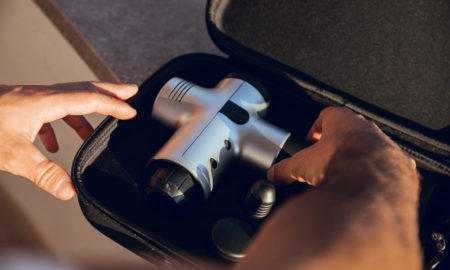
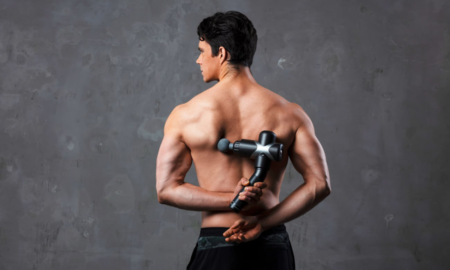
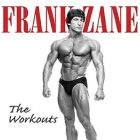

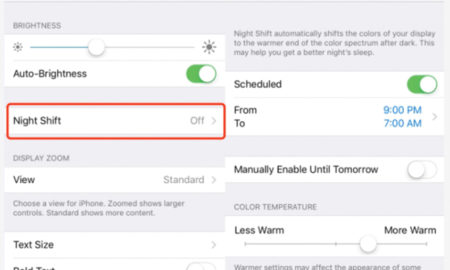


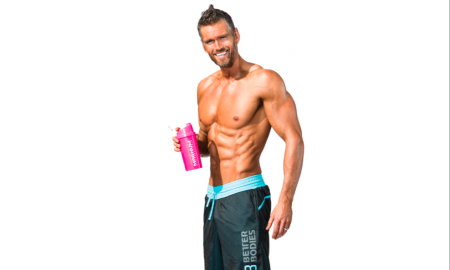
You must be logged in to post a comment Login